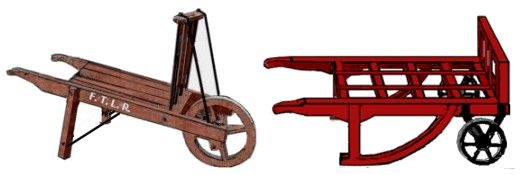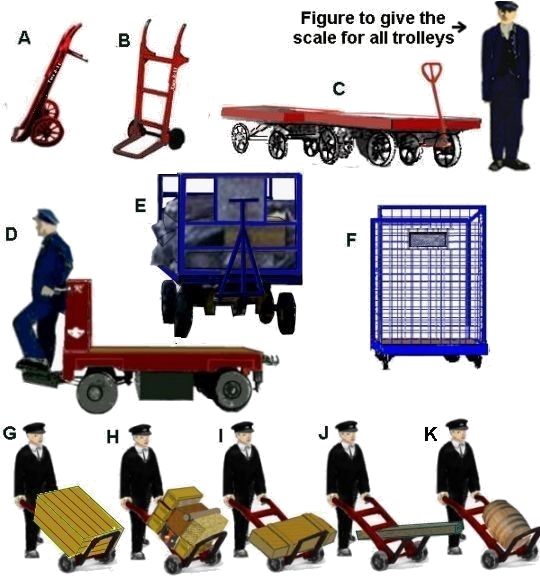International Good Guys ~ Keeping a low profile since 1971 ~ Site maintained by
All material Copyright © Mike Smith 2003 unless otherwise credited
| Return to Loads and Handling Index |


G The simple sack truck was used to carry surprisingly large loads, the case in the sketch is not the largest such box I have seen moved in this way but in model form a larger case would look unrealistic.
H shows a typical load, in a goods shed the pile could be even higher.
I shows how not to do it, this heavy packing case would be easier to handle if it had been placed on edge to move the centre of gravity closer to the axle on the truck.
J shows one option when moving a case that would otherwise be too wide to fit through a doorway. Even longer cases were handled in this way.
K shows how a barrel would be moved, in all the photographs I have seen only one barrel is moved at a time.

Built in their thousands at Swindon in the mid 60's - arguably the last new build railway vehicles from G **s Wonder*** Rail*** works - and that was essentially a road vehicle!! - Roger Curtis
In 1967 I recall a young calf waiting in one on Reading station, en route from the West Country to Tonbridge. BR still conveyed unaccompanied livestock then. - Peter Masson
Several stations had signs on the platform - 'BRUTES are not to be left unattended beyond this point'. Tonbridge and Shrewsbury are two very diverse examples that come to mind. - Bill Hayles